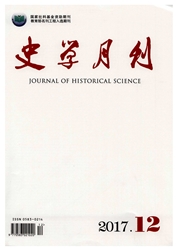

 中文摘要:
中文摘要:
宋代的朝会,包含朝参与听政两个主要部分。朝参,是文武百官日常拜见君主的一套礼仪活动。神宗朝推行的朝参改革,一方面扭转了北宋前期朝参制度中虚实交叠的错综局面,有效缓解了糅合正衙朝见的旧体制与内殿起居的新趋向所带来的诸多弊病;另一方面,也奠定了元丰以后至南宋时期四等朝参的基本格局。元丰官制改革是朝参改革得以顺利推行的基础,基于等级体系所发生的结构性转变,元丰以后,等级安排以注入职掌的职事官为重心的趋势更为明显,朝参的务实性也得以增强。徽宗时期以编修礼典为契机,对朝参制度做了一定的调整,如进一步整合内廷与外朝的朝参形式、更改六参的频度等,这些变化也影响到南渡以后朝参制度的发展。
 英文摘要:
英文摘要:
Court in the Song dynasty includes rite and hearing,court attendance is a set of rites of all the civil and military officials being called to pay respect to the emperor.The court attendance reform of Emperor Shenzong on one hand reversed the intricate overlap of the actual situation in the early North Song dynasty,effectively alleviated the disadvantages in mixing the old system of formal audience and the new trend of private apartments audience;on the other hand,laid the basic pattern of four class court attendance after Yuanfeng years until the South Song dynasty.Meanwhile,the Yuanfeng bureaucracy reform is the foundation of successfully carrying on court attendance system reform;basing on the structure change of class system,after Yuanfeng years,the class arrangement of court attendance had a more obvious trend of focusing on the executive ministry officials and became more practical.Moreover,during the reign of Emperor Huizong,the dynasty made several rectifications in the court attendance system,such as further integrating attendance forms of inner court and outer court,changing the frequentness of monthly six audiences,etc.,which influenced the development of the attendance system in the South Song dynasty.
 同期刊论文项目
同期刊论文项目
 同项目期刊论文
同项目期刊论文
 期刊信息
期刊信息
